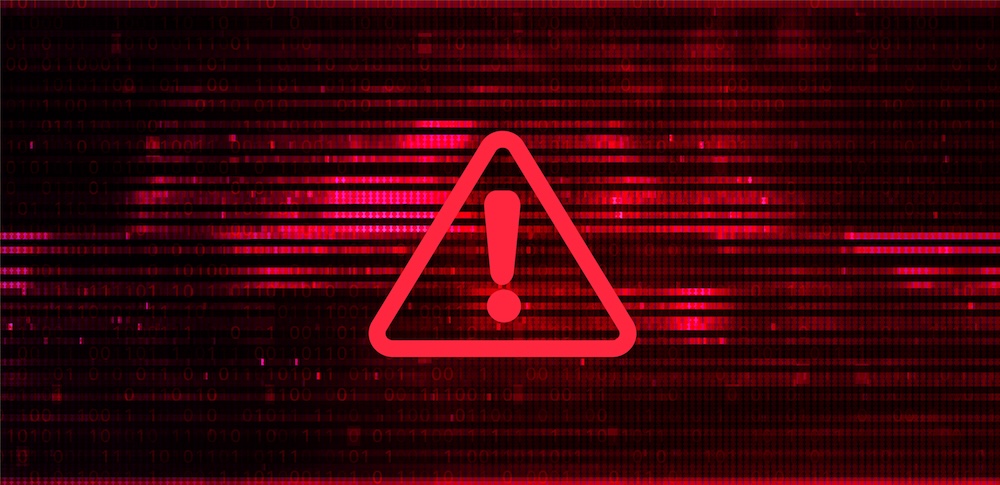When was the last time you considered your printer a potential security risk? Most businesses focus on the security of their servers, endpoints, and cloud applications, and for good reason.
But printers store data, connect to your network, and handle some of your most sensitive documents. They have hard drives, memory, and network access, which means they’re computers in their own right. Yet they rarely receive the same level of security as the rest of the IT infrastructure, leaving a gap that attackers know how to exploit.
How Printers Become Gateways for Data Breaches
Printers don’t always show up on security risk assessments, but they should. In reality, a printer is a specialized computer with a hard drive, memory, operating system, and an internet connection. That means it faces the same threats as any other endpoint on your network.
Some common vulnerabilities include:
- Unsecured network connections: Printers often connect to shared office networks, making them visible to anyone with access, inside or outside your organization.
- Default or weak passwords: Many devices ship with default credentials that never get changed, leaving an easy opening for hackers.
- Outdated firmware: Unpatched printers can contain exploitable bugs or backdoors.
- Unencrypted data: Print jobs can be intercepted during transmission if encryption isn’t enabled.
- Cached documents: Many printers store copies of recently printed or scanned files on internal hard drives, where they can be accessed later.
And not every breach is digital. Something as simple as a confidential document left on a print tray can expose private data. “Print and forget” habits are common in busy offices, and they add another layer of risk to an already vulnerable environment.

The Business Impact of a Printer-Related Breach
A single breach through an unsecured printer can cause serious consequences. The financial cost alone can be staggering, from regulatory fines to lost revenue and downtime while waiting for systems to be restored. But the real damage often goes deeper.
- Financial costs: Businesses can spend hundreds of thousands of dollars recovering from data breaches. Those costs climb if the incident involves customer data or regulated information.
- Compliance failures: Industries like healthcare, finance, and education are bound by strict data protection laws. A printer storing unencrypted patient files, for example, can easily violate HIPAA regulations.
- Reputation and trust: Customers expect you to protect their data. A breach caused by an unsecured printer doesn’t just hurt your business; it can undermine your credibility.
- Hybrid work challenges: With remote teams connecting from multiple devices and locations, the number of unsecured print endpoints has grown. Home printers and shared networks often lack the security standards applied in corporate offices.
The 4 Pillars of Print Security
A good print security strategy should cover four core areas: devices, networks, documents, and user security. Together, they create a layered defense that reduces exposure and the chance of a breach.
1. Device Security
Protecting the printer itself is the foundation of print security.
- Update firmware regularly to patch vulnerabilities.
- Replace default passwords with complex credentials and implement role-based access control.
- Lock down physical access to prevent tampering.
- Disable unused ports or services that could provide entry points for attackers.
- Use secure boot and whitelisted firmware to ensure only authorized software runs on the device.
Treating printers like other network endpoints, with the same rigor applied to laptops and servers, helps ensure consistent protection across your IT environment.
2. Network Security
Printers often communicate across multiple systems, from cloud print services to internal servers. That means they must be secured within the broader network.
- Encrypt print data in transit using protocols like HTTPS or IPsec.
- Segment the printer network from your primary business systems to contain potential threats.
- Use firewalls and disable unnecessary open ports.
- Monitor network traffic for unusual behavior, such as large outbound data transfers or access attempts from unknown devices.
- Secure remote printing through VPNs or managed gateways to protect mobile workers.

3. Document Security
Data protection doesn’t stop once the document reaches the printer.
- Pull printing (or secure print release) ensures jobs only print when the authorized user is physically present.
- Encrypt stored print jobs so that even if the printer is compromised, the data remains unreadable.
- Set automatic deletion policies to clear queued or cached jobs after printing.
- Add watermarks or audit trails to track printed materials and prevent unauthorized copying or distribution.
By managing how documents are handled before, during, and after printing, businesses can close one of the most common leak points for sensitive data.
4. User Security
Even the most advanced print security measures can fail if users bypass them.
- Require authentication (badges, PINs, or multifactor verification) before printing or scanning.
- Limit permissions based on job role—only allow access to printers and features users truly need.
- Educate employees on the risks of unsecured printing and the importance of following procedures.
- Monitor print behavior to detect anomalies, such as large or unusual print volumes that may signal data misuse.
Human error remains one of the top causes of data breaches, so training and accountability are vital.
How Managed Print Services (MPS) Strengthens Security
Many businesses turn to Managed Print Services (MPS) to maintain and secure their print environments. A good MPS provider doesn’t just supply and service your devices; they manage and monitor them to maintain protection across every level.
Benefits include:
- Continuous monitoring of print activity to detect unusual behavior.
- Automatic patch management to keep firmware up to date.
- Standardized print policies across the organization for consistent protection.
- Integration with IT security systems, allowing seamless alignment with broader cybersecurity goals.
- Reduced IT workload, as the MPS provider handles routine maintenance and risk mitigation.
By outsourcing print security to an experienced partner, businesses gain peace of mind and free their teams to focus on core priorities.
The Role of AI and Automation in Modern Print Security
Artificial intelligence and automation are transforming how businesses safeguard their print environments.
- AI-driven analytics can identify patterns of misuse or detect anomalies that humans might overlook, like sudden spikes in print volume, access from unrecognized devices, or attempts to copy confidential documents.
- Automated threat response systems can pause or block print jobs in real time, isolate affected devices, and alert administrators before data leaves the network.
- Predictive maintenance tools can also flag outdated firmware or configuration issues before they become vulnerabilities, ensuring printers remain secure and reliable.
Together, these technologies bring smarter, faster, and more proactive protection to one of the most easily forgotten areas of business security.

Building a Comprehensive Print Security Policy
To make print security sustainable, businesses need a defined policy that integrates with their larger IT and compliance framework. Here’s how to build one:
- Audit all devices: Identify every printer, copier, and multifunction device connected to your network, including those used remotely.
- Assess current risks: Review access controls, firmware versions, and data handling procedures.
- Define security standards: Create clear policies for print authentication, data encryption, and retention.
- Establish monitoring procedures: Use analytics to track device usage, failed print attempts, and configuration changes.
- Train employees: Make secure printing a routine part of cybersecurity awareness programs.
- Review and update regularly: As new threats emerge, revisit your print security policy to close gaps and adapt to changing compliance requirements.
An effective print security policy ensures that protection isn’t a one-time effort but an ongoing part of your security culture.
Case Example: A Breach That Could Have Been Prevented
Consider a mid-sized healthcare provider that left its networked printers unpatched for months. Attackers exploited a known vulnerability in the printer’s firmware to access stored patient forms, exposing hundreds of records. The incident led to regulatory fines and significant reputational damage.
Now imagine the same organization with proper print security in place: encrypted storage, regular updates, and authentication at the device. That same exploit attempt would have failed, protecting both the business and its patients.
This example highlights a simple truth: print security isn’t optional. It’s an integral part of protecting every piece of your digital ecosystem.
The Bottom Line: Secure Printing Is Cybersecurity
Printers are smart, connected endpoints. Leaving them unprotected leaves your network open to attack. Implementing a strong print security strategy can:
- Prevent data breaches before they happen.
- Strengthen compliance and reduce regulatory risk.
- Protect your reputation and customer trust.
- Simplify your IT workload with automation and managed oversight.
If your organization hasn’t reviewed its print environment recently, now is the time. A Managed Print Services partner can help identify vulnerabilities, apply best practices, and keep your data safe from threats that most businesses never see coming.
About Modern Office Methods (MOM)
Modern Office Methods has helped businesses navigate their document challenges for over 60 years. They offer Production Print Solutions, Managed Print Services, Software Solutions and IT Services to help enhance their customers’ business processes while reducing expenses.
For the latest industry trends and technology insights visit MOM’s main Blog page.



Leave A Comment
You must be logged in to post a comment.